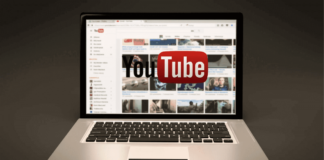How to use YouTube ads for your business?
Businesses use YouTube to engage their target audiences by capitalising on the platform’s popularity. With YouTube Ads, you can target a specific audience while limiting your choices based on factors like geography and language.
The Advantages of YouTube Ads
There are some clear advantages to using YouTube Ads for your business. Here’s a rundown of the reasons why businesses employ YouTube ads:
Extend your reach:
YouTube has over 2 billion monthly logged-in users. This figure is projected to rise further. As a result, YouTube advertising can reach a large number of people.
Simple optimization:
YouTube Ads has several handy optimisation options. People can target your video ad based on its topic, related sector of user preferences, buzzwords, and statistics (e.g., age and gender).
Advanced targeting:
Marketing optimization is more than just targeting the people you want to reach. A more refined target enables you to exclude viewers for whom your service or item is irrelevant. You can use YouTube Ads to exclude keywords, content, categories, and so on if you want to avoid your video ad being linked.
As more people use smart TVs to watch YouTube from the ease of their living rooms, it is becoming a bigger part of people’s daily lives at home. Every month, 120 million viewers observe YouTube on television. Using video ads, you can target individuals while their eyes have already landed on the screen.
YouTube Ads of Various Types
YouTube video advertising can be classified into several forms. Knowing the various types and how they might suit your marketing goals can help you decide which is best.
- Video advertisements that viewers can skip
- Advertisements for Discovery
- Non-skippable video advertisements
- Bumper advertisements
- Layered advertisements
How to use YouTube Ads to expand your business: A Step-by-Step Guide
Run a great YouTube Ads campaign entails more than just engaging video content through http://www.buyyoutubesubscribers.in/. Take the following actions.
Connect your YouTube channel to Google Ads.
Google Ads manages YouTube’s advertising. Connect your YouTube page to your Google Ad words profile to use YouTube Ads. This is how it’s done:
- Access your Google Ads profile.
- Tap the “Tools” button at the top.
- Choose “Linked Accounts” from the “Setup” drop-down menu.
- To add a YouTube channel, follow the instructions.
Make and publish your video advertisement.
A YouTube video does not require expensive camera equipment. Many telephones are equipped with the necessary technology. To begin, follow these steps:
- Take the footage. You’ll need your video. For a modest cost, you can also employ stock imagery.
- Make changes to your video. You can use free apps to clip together different scenes, add transitions, music, and more.
- Keep in mind the time constraints. For instance, if you choose a bumper ad, your film can be up to six seconds.
- Once your video is complete, submit that to the YouTube channel and select an appropriate ad format. When deciding on an ad kind, keep your goal in mind. For example, if you want people to download a mobile app, an overlay ad is a horrible option because it only appears on desktop computers. The chances are slim that the viewer will get out their phone, hunt for the app, and install it. If you produce an ad that people can view on your mobile phone, they are much more likely to tap and install it immediately on their device.
In Google Ads, create a YouTube ad campaign.
The next step is to construct your own YouTube ad campaign. Again, YouTube will use Google Ads to manage this. Here’s how it’s done:
- Navigate to the “Campaigns” area of your Google Ads account.
- Choose “New Campaign.”
- Using the choices provided, define your ad aim.
- Select “Video” as the campaign type.
Select a YouTube ad format
You will then be able to select the YouTube ad format. See the table above for a breakdown of the formats offered. Based on the goals you established for your video before developing it, you may now know which type you intend to utilise.
Determine your budget, timeline, and bid approach.
Google Ads will prompt you to input a budget, establish a time limit, and select a bid strategy. Your budget will determine how frequently and prominently your ad appears. How that amount is spent is determined by your bid strategy. Google Ads can take numerous approaches. Google Ads has a troubleshooting guide that might help you define your approach.
Choose a region, a language, and a target audience.
Now you can take actions to target your advertisement more precisely. Set the area where you want the advertisement to be displayed first. This could be especially beneficial for small businesses targeting their local community.
Second, specify which languages will be targeted. This is especially helpful if you conduct business in a region with a diverse population of language speakers.
Finally, determine the demographic. It is important to understand the demographics, including age and gender, of the audience you are attempting to reach with your goods or services.
Determine your keywords, subjects, and locations.
Then, you can choose keywords and subjects pertinent to your ad to narrow the targeting further. You can choose themes that correspond to the interests of your target audience and then add pertinent keywords to that topic area.
Assume you’re making advertisements for your beauty company’s new lipstick range. A suitable theme could be “beauty” or “makeup.” Lipstick, lip filler, and plumping lipstick are examples of relevant keywords.
You can finally specify the location of the advertisement. There are several options, including example websites, apps, and related YouTube videos. YouTube will target your YouTube ad management more precisely if you provide more detailed information.
Paste the link to your video here.
The YouTube display URL will need to be pasted into the appropriate Google Ads box when prompted to add the video.
Use Google Ads to track performance and conversions.
One of the best features of Google Ads is tracking how effectively your ads perform. This allows you to decide where to spend your marketing budget.
If you have conversion tracking enabled in Google Ads, you must continue to watch the performance indicators of your campaign. Google’s help centre has further information on tracking performance and conversions












